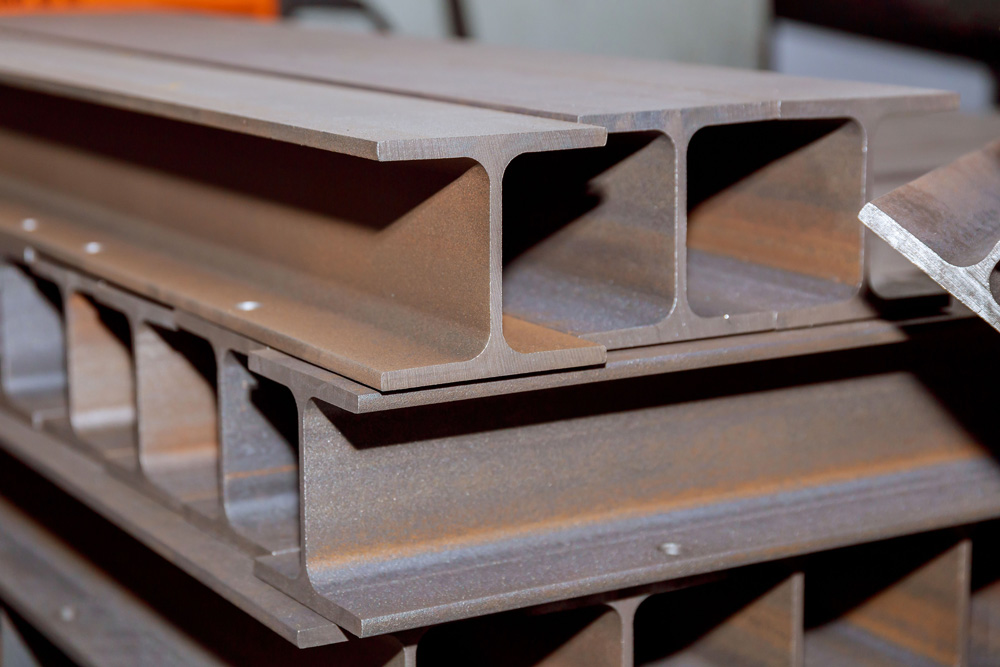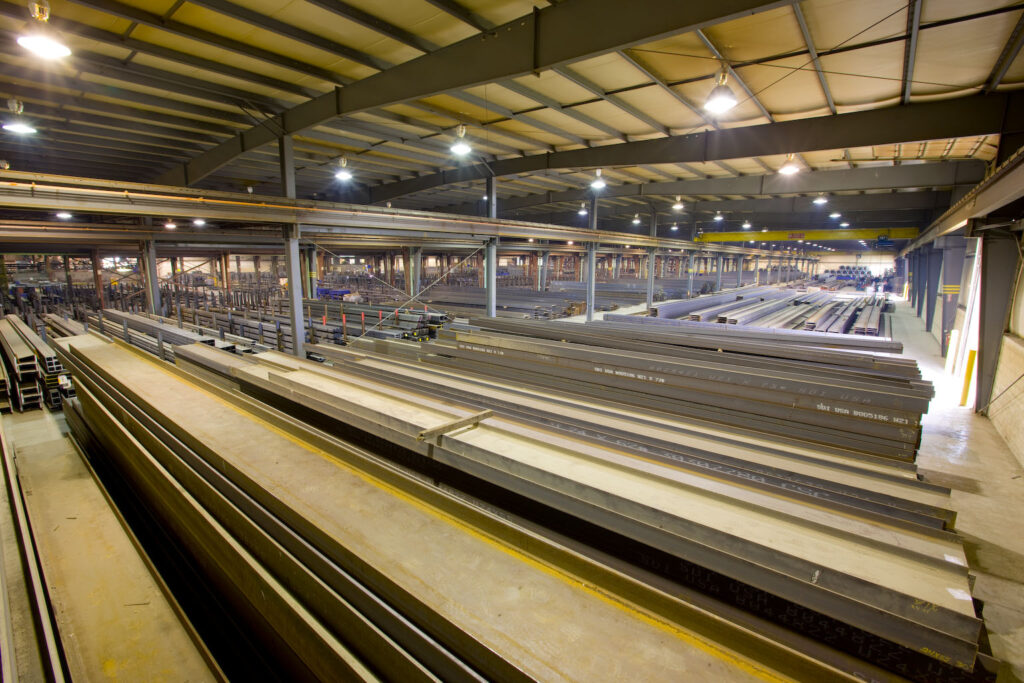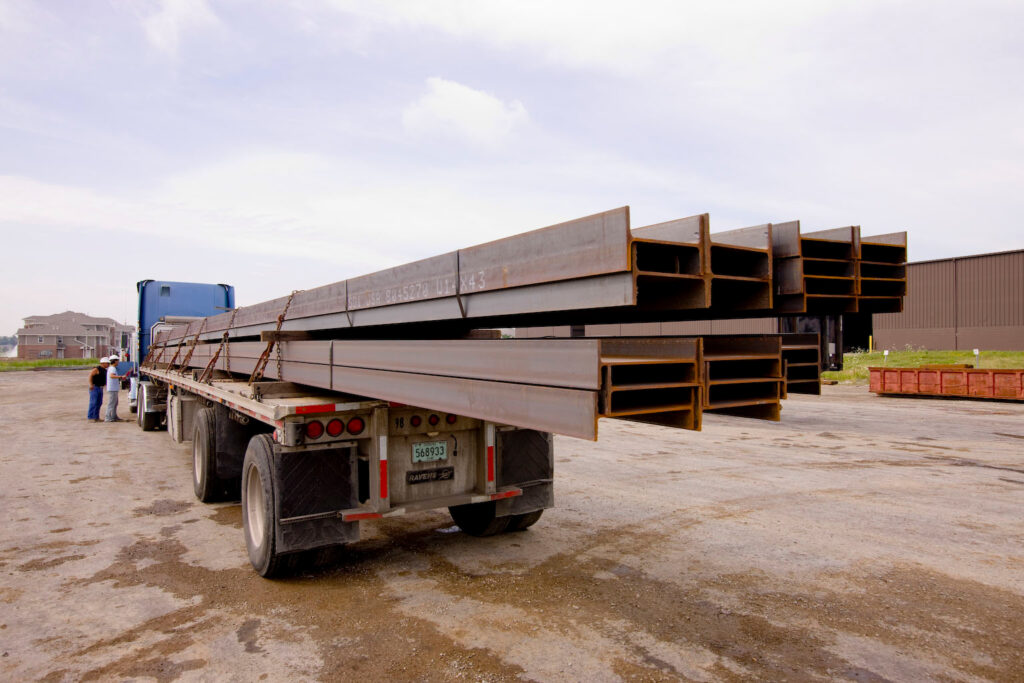
FINDING THE RIGHT STEEL BEAM SIZES AND DIMENSIONS
When it comes to steel beams, size does matter. Whether constructing a residential high-rise, building a bridge, or reinforcing a commercial warehouse floor, getting the right beam size and dimensions is critical to your project’s overall strength and long-term durability. Wrong steel beam size or dimensions can lead to significant project delays, cost overruns, and safety risks. The following steps and considerations can help you get the correct steel beam sizes and dimensions.
COMMON STEEL BEAM TYPES AND SIZES
Steel beams come in various sizes, shapes, and dimensions. Each serves a different purpose depending on specific structural requirements. The main types include I-beams, W-beams, H-beams, and S-beams. Understanding these types is one of the first steps in choosing the right beam for a project.
I-beams, or standard beams, are characterized by their “I”-shaped cross-section. They are common in general construction for their strength-to-weight ratio and efficiency in bearing loads. Standard I-beams range in size from 3 inches at 5.7 pounds per foot to 24 inches at 121 pounds per foot, with lengths up to 60 feet.

W-beams, or wide-flange beams, feature wider flanges than I-beams, making them more effective for distributing heavy loads across longer spans. They are suitable for large infrastructure projects, such as bridges and high-rise buildings, where their wider flanges provide enhanced stability. Available sizes include 4 inches at 13 pounds per foot to 44 inches at 335 pounds per foot, making them versatile for large-scale commercial and industrial projects.
H-beams are similar to W-beams in flange width but are generally heavier and capable of supporting even larger loads. Their equal flange and web thickness give them uniform strength across all dimensions, making them ideal for columns in tall buildings or load-bearing applications in deep foundations. H-beams are available in a range of sizes, from 3 inches to over 27 inches, and can support the heaviest structural loads.
S-beams, or standard beams, are a variation of I-beams with tapered flanges thicker near the web, making them ideal for applications where the beam must resist bending and shear forces. These beams are commonly used in machinery, railways, and overhead cranes. Available sizes include 3 inches at 5.7 pounds per foot to 24 inches at 121 pounds per foot.
All beam selections must comply with relevant building codes to ensure safety and legal compliance. Codes like those set by the American Institute of Steel Construction (AISC) specify minimum sizes and material grades depending on the building type, geographic location, and the expected loads. It is essential to check these regulations before finalizing a beam size to prevent costly rework.
COMMON MISTAKES TO AVOID
Several mistakes can occur when selecting steel beam sizes, leading to project delays and cost overruns. Avoiding these errors can save time and money:
- Underestimating Load Requirements: Failing to account for all dead and live loads can result in undersized beams, leading to structural issues or failure.
- Ignoring Deflection: Even if a beam meets the load requirements, it may deflect more than anticipated, which can compromise the building’s aesthetics and functionality.
- Oversizing: While safety is critical, choosing unnecessarily large beams can increase costs and waste materials. A thorough load analysis can help optimize the beam size without overbuilding.
- Misinterpreting Beam Types: Some manufacturers may use terms like “I-beam” and “W-beam” interchangeably, despite their differences. Requesting cross-sectional drawings from the supplier ensures you’re getting the correct beam for the job.
HOW STEEL BEAM SIZE AFFECTS SHIPPING AND DELIVERY

When dealing with steel beams, size isn’t just about what works on-site—it’s also about how you get those beams to your project. Beams can be massive, stretching up to 60 feet long, and figuring out how to transport them can be a significant undertaking. Larger beams may require special trucks, escort vehicles, and even route planning to avoid issues with bridges or road width.
Smaller beams are easier to transport, but even then, you’ll need to consider loading and unloading equipment like cranes or forklifts. The heavier and longer the beam, the more logistics are involved in getting it from the supplier to your construction site. And if you’re working with custom beams, adding cutting, drilling, or other services can impact fabrication turnaround time and how quickly your materials are ready for delivery.
CHOOSING THE RIGHT STEEL BEAM SUPPLIER FOR YOUR PROJECT
Getting the right beams customized to fit your project and delivered on time comes down to choosing the right steel beam supplier. We have been doing this at Westfield Steel for decades. From standard beam sizes to custom fabrication and value-added services, we have the expertise and tools to ensure your project gets the critical support it needs. Reach out to our steel experts for more information on our steel beam capabilities and get a free quote today.
Back